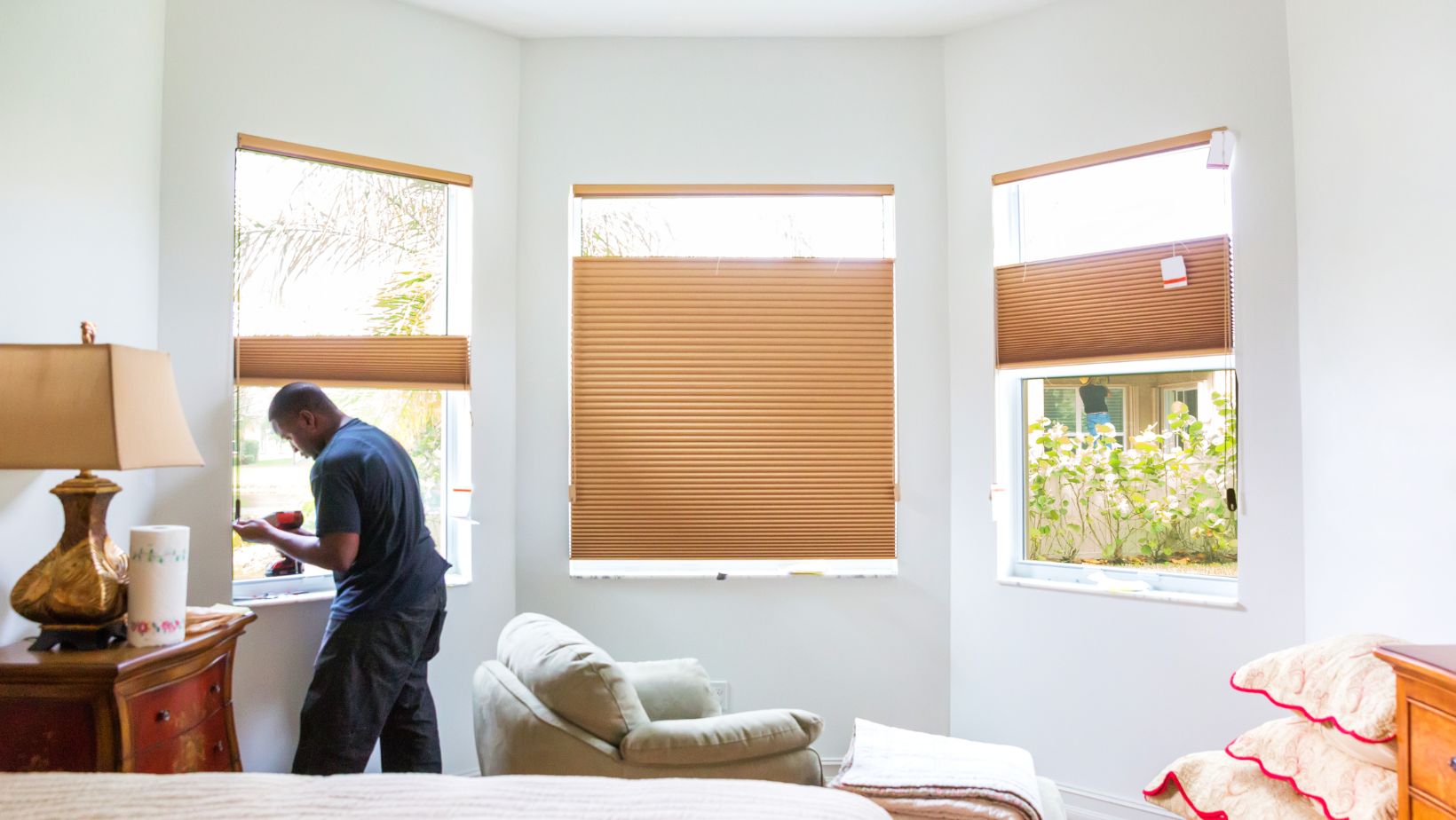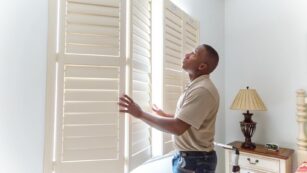
As homeowners continue to refine their living spaces, window treatments have surged to the forefront of home decor essentials. Today’s trends blend aesthetics with functionality, transforming simple shades, blinds, and draperies into pivotal design elements that elevate interior environments. From the resurgence of luxurious, layered curtains to innovative, energy-efficient blinds, the choices are both stylish and smart.
Current Window Treatment Trends
In line with the evolution of home aesthetics, current window treatments are embracing trends that prioritize both environmental sustainability and advanced technology. This section delves into how these trends are reshaping consumer expectations and interior designs.
Eco-Friendly Materials
 The shift towards sustainable living has heavily influenced the choice of materials for window treatments. Consumers now prefer materials that are not only durable but also environmentally friendly. Examples include bamboo, recycled polyester, and organic cotton. These materials are sourced sustainably and contribute to a smaller environmental footprint. Additionally, they often come with certifications like OEKO-TEX or GREENGUARD, ensuring that they meet rigorous environmental standards.
The shift towards sustainable living has heavily influenced the choice of materials for window treatments. Consumers now prefer materials that are not only durable but also environmentally friendly. Examples include bamboo, recycled polyester, and organic cotton. These materials are sourced sustainably and contribute to a smaller environmental footprint. Additionally, they often come with certifications like OEKO-TEX or GREENGUARD, ensuring that they meet rigorous environmental standards.
Smart Technology Integration
Technological advancements have revolutionized window treatments through the integration of smart technology. Modern setups allow homeowners to control shades and blinds with the mere touch of a button on their smartphones or even via voice commands. Popular features include programmable schedules that adjust treatments at pre-set times for optimal light control and energy efficiency.
Popular Styles and Fabrics
The current trends in window treatments reveal a marked preference for particular styles and fabrics that emphasize both aesthetics and functionality. As homeowners seek options that meet their modern decor themes while delivering on performance, certain patterns and materials stand out.
Minimalist Designs
 Minimalist designs dominate current window treatment trends, reflecting the larger movement toward simplicity and elegance in home decor. These designs feature clean lines and a subdued color palette, focusing on uncomplicated functionality. Fabrics like linen, sheer, and lightweight cotton are particularly prevalent, as they provide a delicate balance between privacy and natural lighting. Popular styles include roller shades and cellular shades, which not only complement a minimalist aesthetic but also enhance energy efficiency by effectively managing heat transfer and light control.
Minimalist designs dominate current window treatment trends, reflecting the larger movement toward simplicity and elegance in home decor. These designs feature clean lines and a subdued color palette, focusing on uncomplicated functionality. Fabrics like linen, sheer, and lightweight cotton are particularly prevalent, as they provide a delicate balance between privacy and natural lighting. Popular styles include roller shades and cellular shades, which not only complement a minimalist aesthetic but also enhance energy efficiency by effectively managing heat transfer and light control.
Bold and Vibrant Textures
In contrast to minimalist designs, there’s also a growing trend for bold and vibrant textures in window treatments. These include rich velvets, heavy brocades, and textured silks that make a statement. Homeowners use these eye-catching textures to add a layer of luxury and visual interest to rooms. Typically coupled with dramatic colors like deep blues, emerald greens, or intense burgundies, these fabrics are often used in settings where a striking design impact is desired.
Impact on Energy Efficiency
Energy-efficient window treatments not only improve the aesthetics of a home but also significantly reduce energy consumption. They act as additional insulation layers, keeping homes warm in winter and cool in summer. This results in lower heating and cooling costs, making them an attractive option for homeowners aiming to cut energy expenses.
Types of Energy-Efficient Window Treatments
-
 Cellular Shades: These are known for their unique honeycomb design that traps air in distinct pockets, creating insulation that can help reduce energy costs.
Cellular Shades: These are known for their unique honeycomb design that traps air in distinct pockets, creating insulation that can help reduce energy costs. -
Thermal Curtains: Made with heavy fabrics that block light and insulate windows, thermal curtains are effective in maintaining room temperature and decreasing energy usage.
-
Solar Shades: Solar shades are designed to block ultraviolet rays and reduce glare, which minimizes heat gain during summer and retains heat during the winter.
Benefits of Energy-Efficient Window Treatments
-
Cost Savings: Homeowners notice a reduction in their utility bills as energy-efficient treatments can decrease the need for heating and air conditioning.
-
Comfort Enhancement: Rooms maintain a more consistent temperature, enhancing comfort throughout the year.
-
UV Protection: These treatments often block harmful UV rays, protecting interior furnishings from fading and damage.
Integration with Smart Home Technology
Energy-efficient window treatments pair excellently with smart home technology, optimizing their effectiveness. Users can program their smart blinds or curtains to open or close based on the sun’s position or the time of day, maximizing natural light use while minimizing energy waste. This integration not only enhances convenience but also furthers energy conservation.
